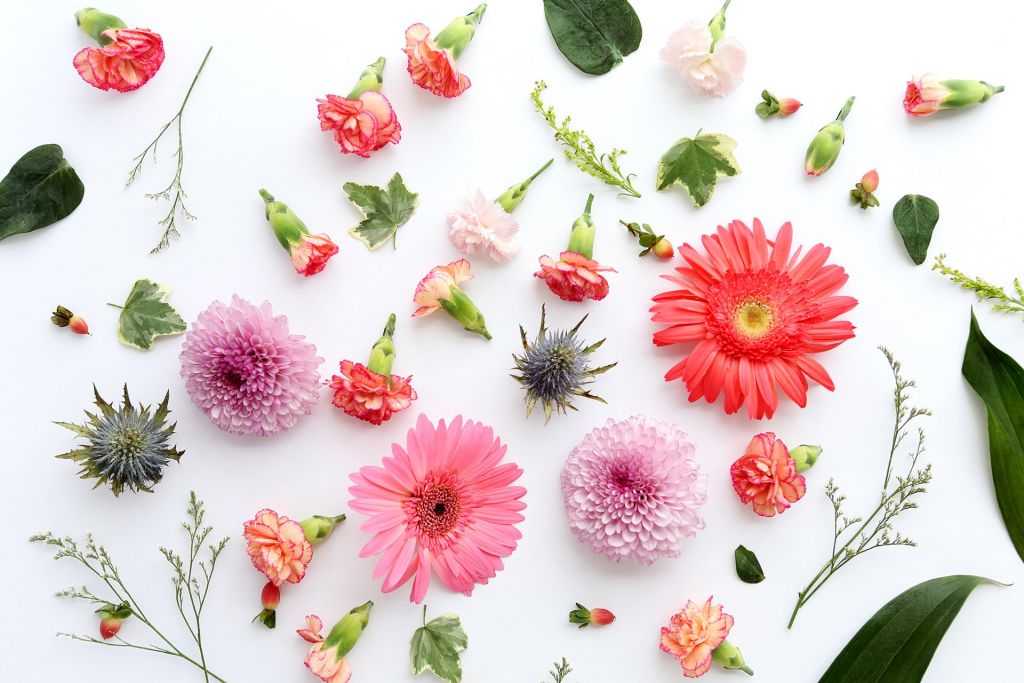Which Color Scheme is Best for My Wedding?
The color scheme to your wedding can make, break, and set the tone for the entire event. More traditional brides should stay the course with classic shades while more the eclectic of stylistas should start thinking outside the box for colors that may not seem as quintessentially “bridal.” There are a few ways to brainstorm and land on a palette though starting with these few questions that you should ask yourself throughout the planning process.
“What season are you getting married in?”
Winter, spring, summer, or fall – the season is a big help in determining your color scheme. Warmer, richer tones are appropriate for the colder months, while pastel or softer colors do well in the springtime – vibrant shades are the best for summertime, use the calendar as your first stop guide.
“Do you want color or are you sticking with neutrals?”
Of course, you may want to make the decision whether you want to incorporate any colors at all into the wedding. Some brides want to go with a completely neutral palette sticking with creams or greys and then only sprinkling in a few metallics (think rose gold, gold, bronze, or silver). For more contemporary brides, this is a good route to take.
“Are you inspired by the outdoors or envision a more modern ethos?”
This will also help you land on the right color scheme. If you’re inspired by Mother Nature you’ll want to go with more natural tones: sage greens, blush, blues, and butter yellows. But if you’re looking to create a chicer, modern affair you can play with some bolder colors such as red, plum, or midnight black.
Other Expert Answers
Wedding Wire
“Choose a Base Color
Your base color will be the one that’s used most prominently throughout your wedding, and you can’t build your full-color palette without it. The base color can be anything from soft blush pink or peach to elegant navy blue, punchy yellow, or even dramatic jade green, depending on the overall vibe you want to create. Most importantly, it should be a color you genuinely love!
Once you have your base color, the next step is to choose a handful of complementary “accent” colors — generally two or three of them. These accents will round out your wedding palette, adding dimension and variation to prevent the colors from being over-the-top matchy-matchy or kitschy. Your accents can be anything from bold, contrasting hues on the opposite side of the color wheel, to neutral tones like gray, white, black, or beige.” – via WeddingWire
Martha Stewart Weddings
“Consider the Location and Season
If you don’t have colors in mind, no big deal! Just look to your venue and play up the colors that are already there (this will save you from having to test the palette on-site later). Alternatively, you might take a cue from Mother Nature and select shades that fit the season, like fiery oranges in fall or sunny yellow in summer.” – via Martha Stewart Weddings
Bridal Guide
“Weddings are rarely monochromatic, says Sasha.
‘Even white has hundreds of thousands of shades.’ White can be mixed with lime green or accented with peach, creating a chic, subtle palette — but why stop there?
Do not feel you have to go with the oft-suggested one bold color and one accent color, Sasha says. Her romantic, spirited palettes typically comprise anywhere from five to eight colors and are used throughout the event, from the ceremony to cocktails, reception, and after-party.
Take a nuanced approach to how you will use color, allowing for variations on a theme.
For example, your wedding could start out with lighter tones for the ceremony, making its way through several shades to deeper, more saturated versions as the celebration unfolds, creating a gorgeous ombré effect. These palettes are a particular favorite of Sasha’s: “They let us use a wide color spectrum and make each part of the wedding feel connected.”
It is not uncommon to be unsure of where to begin when determining your palette.
First, you need to find something to inspire you throughout the design process. Maybe it’s a place, either real or imagined: The azure blues of a favorite seaside spot; a multi-hued Downton Abbey-esque English garden. Or a mood: serene and uplifting or joyously high-energy. Get your creative juices flowing by spending time perusing paint chips at a hardware store or fabrics at a craft center.
‘My best advice is to find a photo that moves you,’ says Sasha.
A single photo can contain many palette possibilities, depending on which color combinations you choose to focus on. Put your colors together and then wait a day or two, Sasha says. “If you come back to your palette and it still makes you feel joyous and excited, you’ve found your color inspirations.” – via Bridal Guide
Our Favorite Traditional & Trendy Wedding Color Schemes
- Magenta & Yellow
- Gold & Emerald
- Black & White
- Plum, Cranberry & Orange
- Cream, Sage, & Black
- Rose & Mint Green
- Blush & Cream
- Silver, White, & Lavender
- Powder Blue & Butter Yellow
- Mustard & Grey


